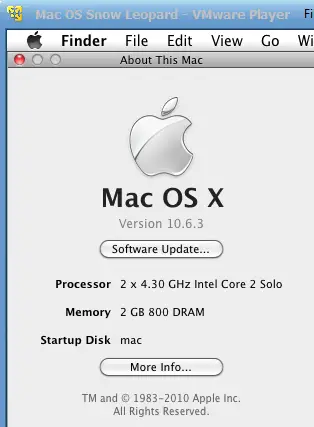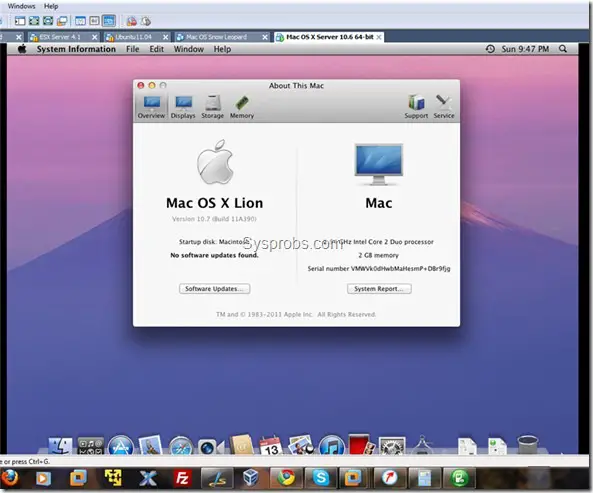

- #Vmware for mac 10.6.8 how to#
- #Vmware for mac 10.6.8 serial numbers#
- #Vmware for mac 10.6.8 mac os x#
- #Vmware for mac 10.6.8 upgrade#
- #Vmware for mac 10.6.8 software#
Use the menu at the top of the window to select Utilities, Disk Utility.
#Vmware for mac 10.6.8 mac os x#

#Vmware for mac 10.6.8 serial numbers#
You won't be asked for any serial numbers you'll only be asked to confirm that the OS is allowed to run in a virtual machine.
#Vmware for mac 10.6.8 how to#
In this step-by-step guide, we're going to show you how to install a fresh copy of Snow Leopard in a VMware Fusion 4.1 or later virtual machine. Otherwise, if you need to run Leopard or Snow Leopard in a virtual environment, you can do so using the server version of the operating system which is allowed to run in a virtual environment.įusion 4.1 Installing Snow Leopard As a Virtual Environment If you have the original 4.1 version of Fusion, these instructions will still work. VMware made changes in subsequent versions of the Fusion app that prevents virtualization of any client version of OS X that predates OS X Lion.
#Vmware for mac 10.6.8 software#
Shortly after VMware Fusion released version 4.1 it came to their attention that the Apple license changes did not affect OS X Leopard or Snow Leopard, and only allowed virtualization of OS X Lion client software and later. You can still run your favorite older apps in Fusion's virtual environment.
#Vmware for mac 10.6.8 upgrade#
Now that it's possible to virtualize Leopard or Snow Leopard in VMware Fusion 4.1 or later, there's no reason not to upgrade to OS X Lion. This lack of support for pre-Intel apps caused quite a few Mac users to forego upgrading to Lion. Why is this important? One of the major beefs many Mac users have about Lion is its inability to run older applications that were written for PowerPC processors. Fusion 4.1 can run Leopard and Snow Leopard clients in a virtual environment on the Mac. For the rest of us, it didn't seem like such a big deal, at least not until VMware, one of the leading developers of virtualization software, released a new version of Fusion. That was good news for some, mostly developers and those in the IT industry who need to run server environments.

The only caveat was that the virtualization application had to be running on a Mac. When Apple released OS X Lion, it changed the license agreement to allow customers to run both the client and server versions of Lion in a virtual environment.


 0 kommentar(er)
0 kommentar(er)
